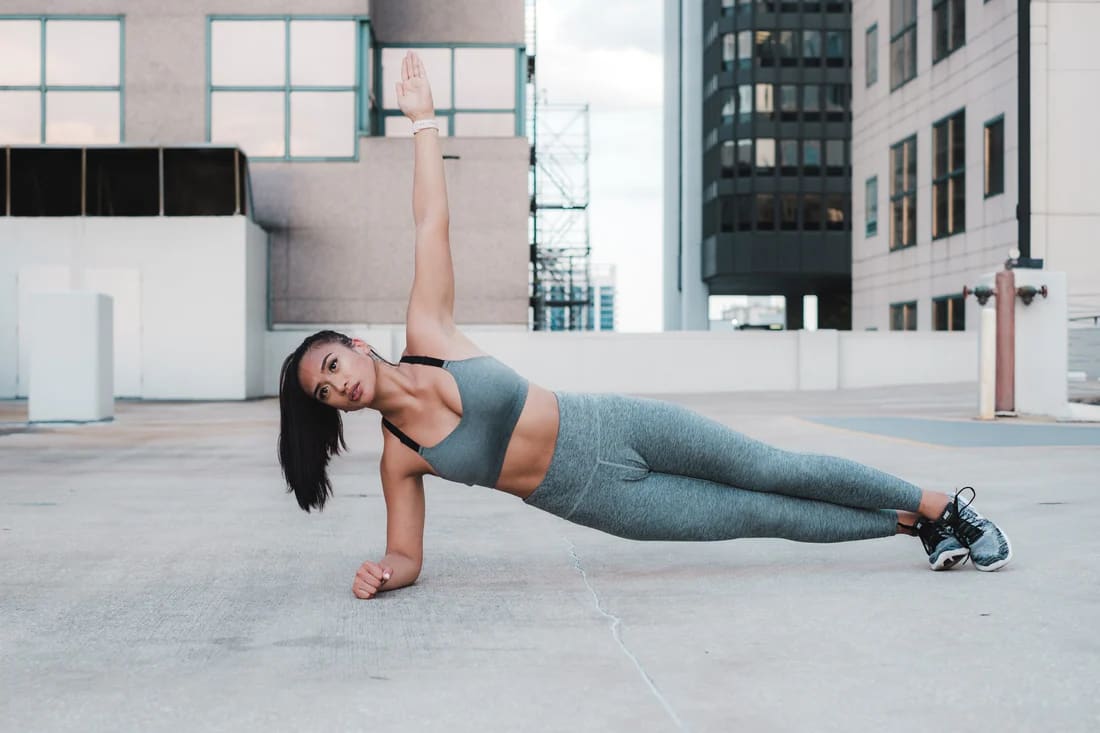When it comes to total body fitness, many people focus on the flashy muscles of their arms and legs. However, one area that often gets overlooked is the core. Your core isn’t just about having washboard abs; it’s the powerhouse of your body that plays a critical role in nearly every movement you make. From lifting groceries to running marathons, understanding the role of your core can significantly enhance your athletic performance and overall well-being.
A strong core supports better body posture and improves stability, ultimately reducing your risk of injury during workouts or daily activities. In this blog post, we’ll dive deep into what constitutes a strong core, debunk several common myths surrounding core training, and explore effective exercises to incorporate into your fitness routine. Whether you’re an athlete looking for an edge or someone simply aiming to improve everyday functionality, strengthening your core is foundational for achieving total body fitness. Let’s get started!
What is the Core and How Does it Work?
The core refers to a complex group of muscles located in your abdomen, lower back, hips, and pelvis. This region is not just about the abdominal muscles; it includes important structures like the transverse abdominis, obliques, and multifidus.
These muscles work together to stabilize your spine and pelvis during movement. They act as a natural corset that helps maintain proper posture while performing both static activities—like sitting—and dynamic movements such as running or jumping.
When you engage your core effectively, you create a strong foundation for all physical activity. This support allows other muscle groups to function optimally without overcompensation or strain.
Understanding how these muscles cooperate can dramatically enhance your fitness routine. A well-functioning core contributes to better balance and coordination while reducing the risk of injury in various athletic pursuits.
The Benefits of Having a Strong Core
A strong core is essential for everyone, not just athletes. It enhances overall stability and balance, which can improve performance in various activities.
With a solid foundation, daily tasks become easier. Think about lifting groceries or bending to tie your shoes. A robust core can make these movements more fluid and less strenuous.
Moreover, a strong core contributes to better body posture. Proper alignment reduces the risk of back pain and discomfort, allowing you to move with confidence throughout your day.
Athletic performance sees a significant boost as well. Core strength translates into increased power during sports activities like running or swimming.
Additionally, emotional benefits arise from having a fit core. Engaging in regular training fosters discipline and boosts self-esteem through visible results over time. This empowerment extends beyond the gym into everyday life experiences.
Common Myths about Core Workouts
Many people believe that core workouts are solely about doing endless crunches. This myth can lead to an imbalanced routine focused only on abdominal exercises, neglecting other crucial muscle groups.
Another misconception is that a strong core guarantees six-pack abs. While aesthetics can be appealing, true core strength involves much more than just visible muscles. It’s about stability and functionality in everyday movements.
Some also think that you need to spend hours training your core for results. In reality, effective core training can be achieved with shorter sessions focused on quality over quantity.
There’s the idea that any exercise targeting the abdominals counts as core work. Core stability encompasses a broader range of muscles beyond the abs, including the back and pelvic region. Understanding this helps create a well-rounded fitness routine for total body fitness goals.
Exercises to Strengthen Your Core
To strengthen your core, focus on a mix of stability and dynamic movements. Planks are a fantastic starting point. They engage multiple muscle groups while enhancing core stability.
Another effective exercise is the bicycle crunch. This targets not just your abs but also your obliques, promoting balanced strength across your midsection.
Don’t overlook the power of bridges. Lying on your back with knees bent, lift your hips to create a straight line from shoulders to knees. This engages both the glutes and lower back, reinforcing overall core strength.
Incorporating exercises like leg raises can further challenge your abdominal muscles. As you lift legs off the ground, you’ll feel those deep core muscles working hard to stabilize.
Consider adding medicine ball twists into your routine for rotational strength. These moves enhance athletic performance by mimicking real-life twisting actions while improving body posture at the same time.
Incorporating Core Work into Your Overall Fitness Routine
Integrating core work into your overall fitness routine is essential for balanced strength and stability. This doesn’t mean dedicating entire sessions solely to abdominal exercises; instead, think of it as blending core training with other workouts.
Start by adding core-focused movements to your existing regimen. For instance, incorporate planks during weightlifting breaks or perform Russian twists between cardio sets. These transitions keep your heart rate up while effectively engaging your muscles.
Consider scheduling specific days for dedicated core workouts. A focused session allows you to explore various exercises that enhance stability without feeling rushed.
Mixing in dynamic movements like kettlebell swings or medicine ball throws can also target the core indirectly while boosting athletic performance. The key is variety—combining static holds with rotational movements can prevent monotony and promote continuous progress in total body fitness.
Injury Prevention and Maintenance with a Strong Core
A strong core plays a vital role in injury prevention and maintenance. When your core is stable, it helps support your spine and reduces the risk of injuries during workouts or daily activities. Many people overlook how crucial their core is until an injury occurs, but you can take proactive steps to strengthen this area.
Core training enhances body posture. Good posture alleviates strain on muscles and joints, leading to fewer injuries over time. A well-developed core allows for better balance and coordination as well, which are essential elements in any fitness routine.
Incorporating exercises that target both the deep stabilizing muscles and the outer abdominal muscles will not only boost overall strength but also improve athletic performance. Simple movements like planks, bridges, and rotational exercises can significantly benefit anyone looking to maintain a robust fitness regimen.
Furthermore, focusing on core stability translates into improved efficiency in other workouts—whether you’re lifting weights or engaging in cardiovascular activities. You’ll notice increased power output while minimizing excess movement that could lead to strains or sprains.
Investing time in strengthening your core isn’t just about aesthetics; it’s about enhancing functional movement patterns that support longevity in physical activity. Prioritizing core training leads to healthier bodies capable of tackling challenges with confidence and agility.






